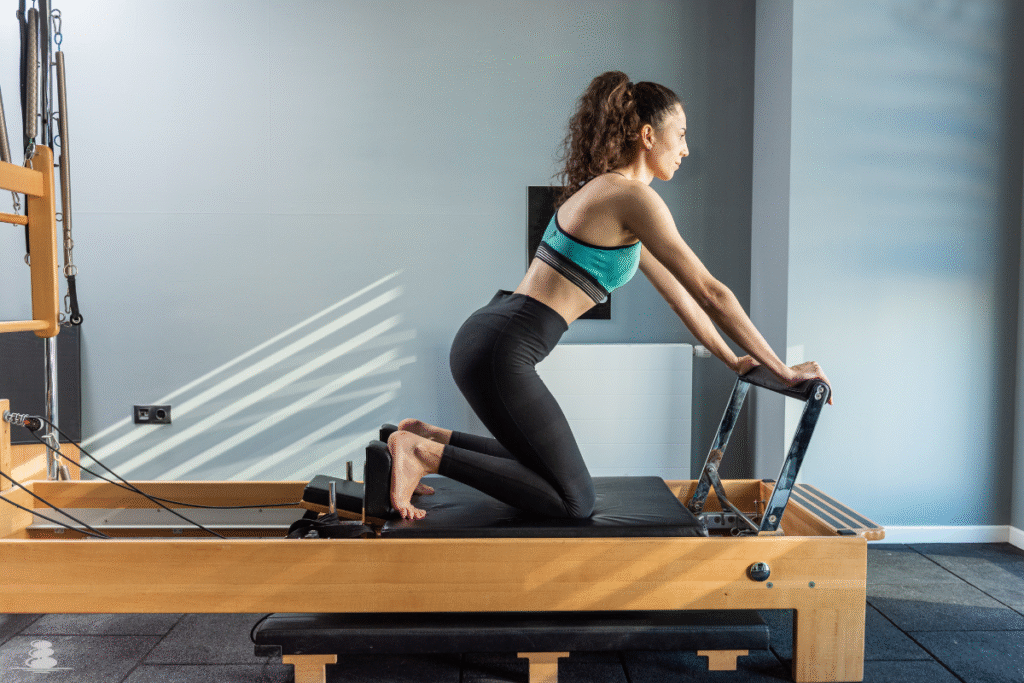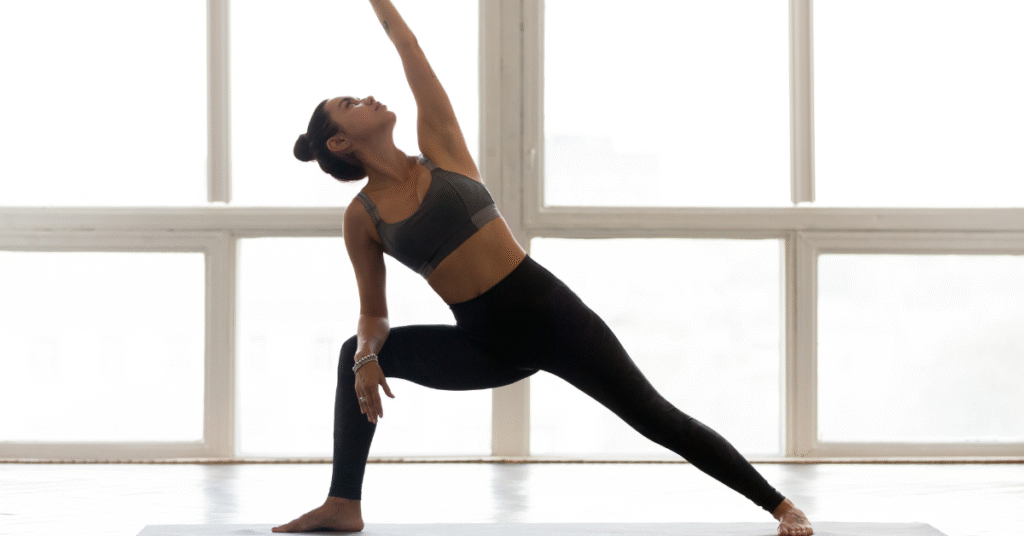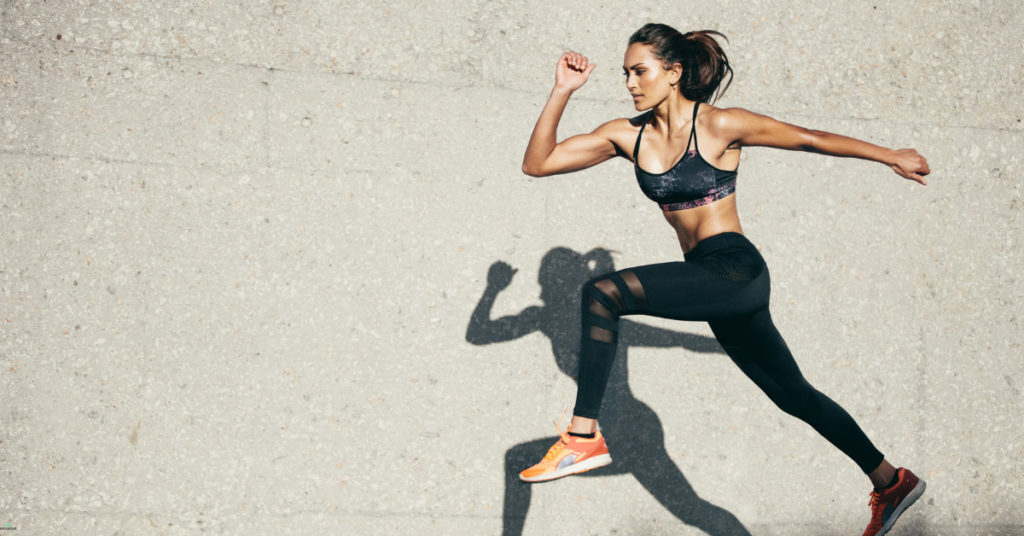What is Pilates?
Pilates is a unique and highly effective form of exercise that focuses on improving core strength, flexibility, posture, and overall body awareness. If you’ve ever wondered what is Pilates, it’s a method developed in the early 20th century by Joseph Pilates, designed to connect the mind and body through a series of controlled, low-impact movements.
At its core, Pilates is all about precision and focus. Unlike traditional workouts that rely on repetitive motions or heavy weights, Pilates exercises require concentration on each movement, breath, and muscle group. This holistic approach aims to develop a balanced body, helping individuals improve posture, flexibility, and muscle tone. Pilates can be practiced on a mat or with specialized equipment, offering a versatile way to enhance fitness for people of all ages and abilities.
So, if you’re looking to enhance your fitness routine with a mindful and effective practice, Pilates might be exactly what you need. In this article, we’ll explore what is Pilates, who created it, how it works, the equipment used, its comparison to yoga, and why it’s an excellent option even for athletes.
Who Created Pilates?
Pilates was created by Joseph Hubertus Pilates, a visionary fitness enthusiast born in Germany in 1883. As a child, Joseph was frail and often sick, suffering from asthma, rickets, and rheumatic fever. Determined to overcome his physical limitations, he dedicated himself to studying anatomy, physical training, yoga, martial arts, and even animal movements. His deep curiosity about the human body and how it functions laid the foundation for what would eventually become the Pilates method.
During World War I, while interned in a British camp as a German national, Joseph began developing his unique system of exercise. He started working with injured soldiers, using makeshift equipment built from bed springs and other materials to help them rehabilitate and regain strength. This early form of resistance training became the basis for his later inventions like the Reformer and Cadillac, still widely used in Pilates studios today.
After the war, Joseph moved to the United States in 1926 with his wife Clara. Together, they opened a body-conditioning studio in New York City, which quickly gained popularity—especially among dancers, performers, and athletes looking for a way to recover from injuries and enhance their performance. Joseph called his method “Contrology,” emphasizing control, precision, and the connection between mind and body.
Joseph Pilates continued to teach and refine his method until his death in 1967. Over time, “Contrology” became known simply as Pilates, in honor of its creator. His legacy lives on through the widespread practice of Pilates around the world, praised for its effectiveness in building strength, improving flexibility, and promoting overall wellness.
How Pilates Works?

Pilates works by focusing on controlled, precise movements that engage both the body and the mind. At its core, Pilates is built on six key principles: concentration, control, center, flow, precision, and breathing. These principles guide every movement and ensure that the exercises are performed with mindfulness and proper form.
One of the main goals of Pilates is to develop a strong core, often referred to as the “powerhouse” of the body. This includes the abdominal muscles, lower back, hips, and pelvic floor. A strong core provides the foundation for efficient movement, improved posture, and better balance. Rather than isolating muscles or using brute strength, Pilates encourages the integration of muscle groups to work in harmony, improving coordination and reducing the risk of injury.
Pilates exercises are typically performed on a mat or on specialized equipment like the Reformer, Cadillac, or Wunda Chair. Mat Pilates relies on body weight for resistance, while equipment-based Pilates uses springs and pulleys to create adjustable resistance that challenges the muscles in a controlled and supportive way. Whether on the mat or equipment, each movement is designed to lengthen and strengthen muscles simultaneously, promoting lean muscle development without bulk.
Breathing plays a vital role in Pilates practice. The breath is coordinated with movement to help engage the deep core muscles and promote relaxation. Inhale through the nose and exhale through the mouth, often with a gentle contraction of the abdominal muscles. This conscious breathing not only helps oxygenate the muscles but also encourages mental focus and stress reduction.
Pilates also emphasizes body awareness. Through consistent practice, individuals learn to become more in tune with how their body moves, identifying imbalances or weaknesses and gradually correcting them. This leads to more efficient movement patterns in everyday life and in other forms of exercise or sport.
In summary, Pilates works by:
- Strengthening deep stabilizing muscles, especially in the core
- Improving flexibility and joint mobility
- Enhancing posture and alignment
- Promoting mental focus and breathing control
- Reducing stress and muscular tension
Whether you’re doing slow, deliberate mat exercises or flowing movements on a Reformer, Pilates creates a strong foundation for a healthier, more balanced body.
Pilates Equipment
Pilates can be done with or without equipment. Some of the most common pieces of Pilates equipment include:
- Reformer: A bed-like apparatus with springs, a sliding carriage, and straps to provide resistance for various exercises.
- Cadillac: A large frame with a variety of attachments, used for more advanced exercises.
- Wunda Chair: A compact piece of equipment used for seated exercises, targeting core strength and balance.
- Ladder Barrel: A curved apparatus used to improve flexibility and strength, often targeting the back and shoulders.
- Magic Circle: A small, flexible ring used to provide resistance during exercises.
While these pieces of equipment add variety and resistance, Pilates can also be practiced on a mat with no equipment, using body weight for resistance.

Pilates Benefits
The benefits of Pilates are extensive, making it a popular exercise choice for people of all ages and fitness levels. Some of the key benefits include:
- Core Strength: Pilates emphasizes core stability, which can improve posture, balance, and overall body strength.
- Flexibility: Regular practice increases flexibility, particularly in the spine, hips, and legs.
- Improved Posture: Pilates helps align the body properly, reducing the risk of developing poor posture habits.
- Injury Prevention: By strengthening muscles and improving coordination, Pilates can reduce the risk of injury in everyday activities and sports.
- Mind-Body Connection: The mindful, focused nature of Pilates encourages mental clarity, reducing stress and enhancing concentration.
- Improved Breathing: Pilates teaches proper breathing techniques that can enhance overall lung capacity and efficiency.
Who Can Do Pilates?
Pilates is suitable for people of all ages and fitness levels, from beginners to advanced practitioners. It is especially beneficial for those with:
- Back pain: Pilates strengthens the muscles that support the spine, often helping to alleviate chronic back pain.
- Postpartum recovery: Pilates can be an excellent way to restore strength and flexibility after childbirth.
- Rehabilitation: Pilates is widely used for injury recovery, as it can be adapted to the individual’s needs.
- Athletes: Many athletes use Pilates to improve their performance, flexibility, and core strength.
- Seniors: Pilates is a gentle form of exercise, making it ideal for seniors looking to improve balance, flexibility, and overall well-being.
Before starting Pilates, it’s always a good idea to check with a healthcare provider if there are any pre-existing conditions or concerns.
Pilates and Yoga
Both Pilates and yoga are mindful forms of exercise that improve flexibility, balance, and mental clarity. However, there are key differences:
- Focus: Pilates primarily focuses on building core strength, stability, and muscle control, while yoga places a greater emphasis on overall body flexibility and relaxation.
- Breathing: Pilates uses a specific breathing technique (inhaling through the nose, exhaling through the mouth), while yoga practices often involve deep, diaphragmatic breathing.
- Movements: Pilates exercises tend to be more controlled and repetitive, often focusing on isolating specific muscle groups, whereas yoga incorporates a series of flowing movements (asanas) that aim to promote mindfulness, flexibility, and strength.
While both can complement each other, Pilates is often preferred by those looking for a more intense, muscle-toning workout, while yoga is more centered around relaxation and flexibility.
Pilates for Athletes
Pilates is not just for dancers or people in rehabilitation—it’s a powerful tool for athletes of all levels and disciplines. Whether you’re a runner, tennis player, swimmer, cyclist, or weightlifter, integrating Pilates into your training routine can significantly boost your performance, reduce your risk of injury, and support faster recovery.
Why Athletes Need Pilates
Athletes often train specific muscle groups repetitively, leading to muscle imbalances, tightness, and overuse injuries. Pilates works to restore balance in the body by targeting both major and minor muscle groups, especially the deep stabilizers in the core, hips, and back. These muscles are crucial for stability, coordination, and proper movement patterns, all of which play a key role in athletic performance.
Benefits of Pilates for Athletes
Here’s how Pilates supports athletes across all sports:
- Core Strength & Stability: A strong core enhances nearly every athletic movement, from swinging a racket to sprinting. Pilates strengthens deep abdominal muscles and stabilizes the pelvis and spine, providing a solid foundation for explosive and controlled movements.
- Improved Flexibility: Pilates lengthens muscles while strengthening them, helping to prevent stiffness and maintain a healthy range of motion. This is especially important for athletes who need to stay agile and prevent muscle strains.
- Injury Prevention: By addressing muscular imbalances, poor posture, and incorrect movement patterns, Pilates helps protect athletes from common injuries such as pulled hamstrings, ACL tears, lower back pain, and shoulder issues.
- Better Posture and Alignment: Proper alignment reduces wear and tear on the joints and ensures efficient movement. Pilates helps athletes develop awareness of their posture both during activity and at rest.
- Faster Recovery: Pilates promotes circulation and gentle movement, which can support muscle recovery and reduce soreness after intense training sessions or competitions.
- Enhanced Breathing & Focus: Breath control in Pilates improves oxygenation of muscles and mental clarity—key benefits during high-pressure moments in sports.
Sport-Specific Advantages
- For runners: Pilates strengthens hip stabilizers, improves stride efficiency, and supports knee alignment.
- For swimmers: Pilates enhances shoulder mobility, core stability, and body awareness in the water.
- For tennis players: Pilates supports rotational power, shoulder health, and balance—essential for strong, injury-free serves and returns.
- For cyclists: Pilates strengthens the lower back and core while improving posture on the bike.
- For weightlifters: Pilates complements strength training by improving flexibility, joint health, and core engagement.
Pilates as Cross-Training
Many professional and Olympic athletes incorporate Pilates into their cross-training programs. It’s a great low-impact way to build strength, restore the body, and train the mind—without putting additional stress on the joints.
Whether you’re in-season, off-season, or recovering from an injury, Pilates can be tailored to meet your specific goals as an athlete. Its emphasis on mindful movement, stability, and balance makes it the perfect complement to high-intensity training and competition.
Conclusion
In summary, Pilates is a powerful and versatile exercise method that offers numerous benefits for both the body and mind. Whether you’re looking to improve core strength, increase flexibility, or prevent injuries, Pilates provides a low-impact solution that can be adapted to suit people of all fitness levels. Its focus on controlled movements, breathing techniques, and mindful exercise creates a balanced approach to overall health and well-being.
With its roots in rehabilitation, Pilates has proven to be an effective method for recovery, athletic performance, and even stress relief. Whether practiced on a mat or with specialized equipment, the method remains a timeless, adaptable practice that continues to evolve to meet the needs of modern-day fitness enthusiasts.
So, if you’ve been wondering “What is Pilates?” now you know—it’s more than just a workout; it’s a holistic approach to building strength, improving flexibility, and enhancing mental clarity. No matter your fitness background, Pilates offers something for everyone, making it a valuable addition to any exercise routine.
Images: Canva



